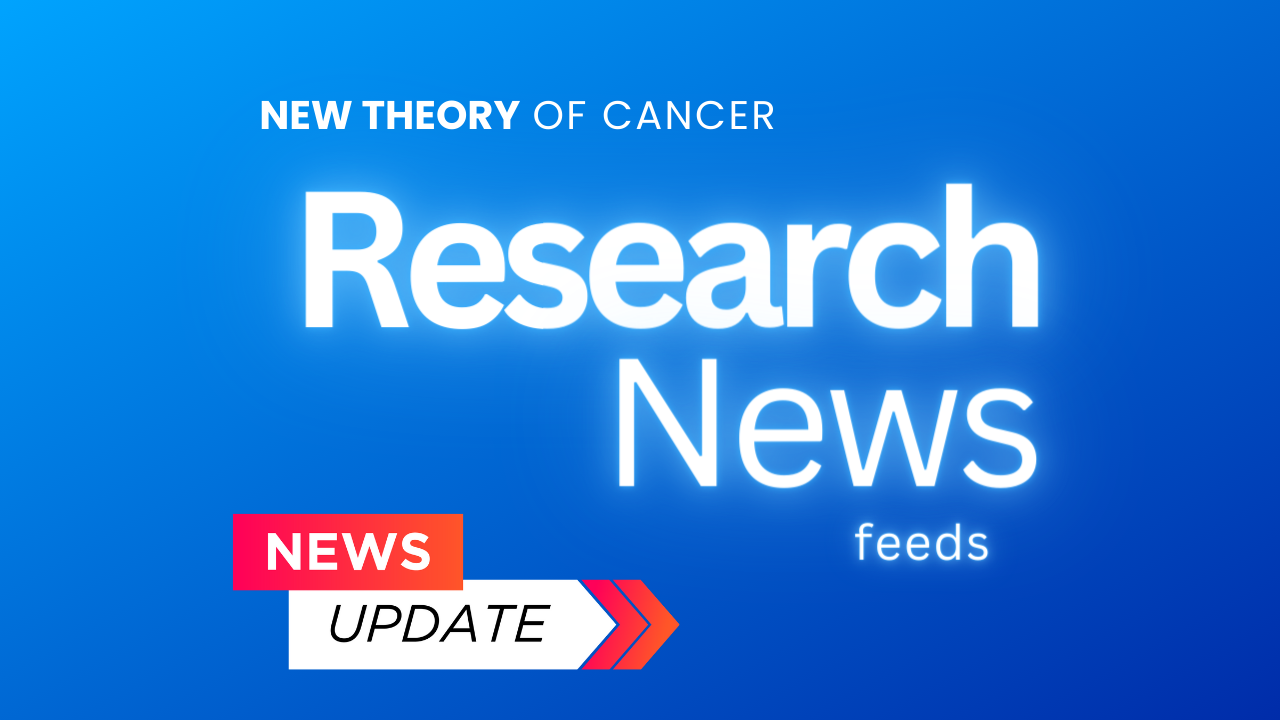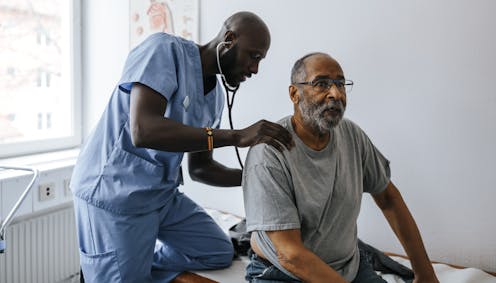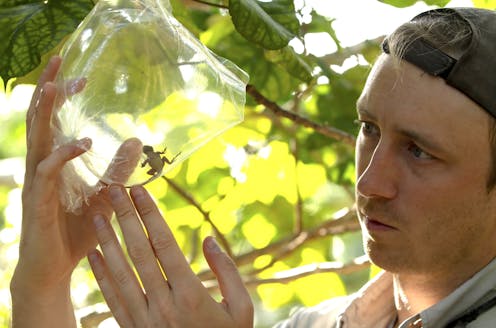Research consistently points to the chronic disparities that exist for some populations in accessing cancer care. The crucial next step that follows identifying these gaps is developing intervention programs to close them.
Evidence-based interventions—whether it be education initiatives, tobacco cessation programs, public service announcements (PSAs), or something similar—have helped more people from racial and ethnic minoritized groups and medically underserved populations get screened for cancer, address preventable risk factors like smoking, participate in medical research, and more. But even with this progress, additional intervention programs are needed to continue to address cancer health disparities.
For the past 17 years, the American Association for Cancer Research (AACR) Conference on the Science of Cancer Health Disparities in Racial/Ethnic Minorities and the Medically Underserved has facilitated the exchange of innovative ideas with presentations on the latest research devoted to this field. At this year’s meeting, held September 21-24, more than 450 abstracts were presented, including intervention programs that have demonstrated results in helping address issues such as food insecurity, quitting vaping, screening and clinical trial awareness, and quality of life during survivorship.
Cancer Research Catalyst spoke with the researchers behind a few of these interventions, who shared the progress they are making in addressing disparities and their vision for the future of these programs.
Food Farmacy: From the Farm to the Hospital
If they build it, will they come? Those within the Harris Health System wondered that as they dreamed of a field of fresh produce in the area surrounding Lyndon B. Johnson (LBJ) Hospital in Houston, Texas. This area is considered a food desert by the U.S. Department of Agriculture, meaning many residents lack access to healthy food options. So, they built a nearby farm to kick start a farm-to-hospital nutritional program that supplies access to tomatoes, green beans, lettuce, squash, and other produce in addition to more healthy food options secured outside of the farm.
The farm has resulted in a number of interventions, including one for cancer patients led by Hilary Y. Ma, MD, the center medical director of the MD Anderson Cancer Center Oncology Program at LBJ Hospital. As part of the program, a two-question screener is used for all cancer patients to identify those who lack access to healthy foods. If they are identified as food insecure, clinicians can refer them to the Food Farmacy, which is located around the corner from the medication pharmacy within the hospital, where they can pick up 30 pounds of healthy food. Patients are also provided with other resources detailing how to eat healthier, including 1:1 nutrition counseling. Each referral is good for three redemptions, and referrals can be refilled by physicians.
At the meeting, Ma shared results from the first year of the program. In total, 3,254 of the 9,809 patients screened were positive for food insecurity and 88.9% of them were referred to the Food Farmacy. Of those, 50.7% redeemed their referrals, many of whom provided positive feedback. One said, “I always struggle to get food in the house because it’s hard to make ends meet because I’m on social security and so it helps me a lot.” Another said, “I love the bananas and the carrots. Oh, the chicken, too. Oh, and they give you also dry beans.”
Both patients and clinicians noted the ease of the program’s structure, in terms of the ability for clinicians to refer patients with one click within the electronic medical record and then for patients to pick up the food right on site. Ma said that the next step is to evaluate this intervention’s impact on clinical outcomes, both specific to cancer and more general health such as weight management, as well as explore options to expand the program.
“It’s about scalability and sustainability,” Ma said. “Not every health care system, especially a safety net system, has the resources to build something like this or have a farm near the campus of the hospital. We have built relationships with community organizations and even with private investment to be the initial key ingredients for further growth.”
Kick Vaping: By Latinos for Latinos
When Rafael Orfin and his colleagues searched for vaping cessation interventions specifically geared toward Latinos, they came up empty.
“We couldn’t find any that were even in Spanish,” said the senior human subject research specialist at the University of Rochester Medical Center. “We wanted to fill in the gap when it came to cessation services available that were created for and by Latinos.”
Kick Vaping is a text messaging intervention for Latinos between the ages of 18 and 25 that features four different storylines—each with 212 preplanned text messages—disseminated over the course of 12 weeks. The storylines are built around language and gender, with one for English speakers and then ones for those who speak Spanish depending on if they identify as male, female, or nonbinary. For each group, the storylines are told in four consecutive phases. The first is pre-quit, which lasts for 15 days with 55 messages. Then three messages are sent over the course of the day someone decides to quit. Next is the post-quit intensive phase, which has the highest volume of messages (87 over 28 days) considering this is the time people often need the most support. Finally, the post-quit maintenance period lasts seven weeks with 67 messages.
These messages were further supplemented with automated responses triggered by keywords (such as crave/antojo or stress/estrés) as well as specific messages sent over 11 days if someone admitted to relapsing. Plus, participants could also engage via text with members of the research team.
“We’d have a genuine conversation and just kind of lay out their motivations, their anxieties, their barriers,” Orfin said. “Folks really loved that component, and I think it helped a lot … having a genuine person that cared about you on the other end of the messages.”
In a pilot program with 40 participants, Orfin said they retained 90% of study participants who then completed a follow-up assessment after three months. When asked how much this program helped them quit vaping, choosing from four options—“not at all,” “a little,” “somewhat,” and “a lot”— 86.1% of the participants responded with “a lot.” Further, self-efficacy scores for avoiding vaping significantly increased at the three-month mark and 88.9% reported being satisfied with the program.
The next step is to assess the efficacy of the intervention in a randomized controlled trial, with a long-term vision of disseminating this program throughout the Latino community, not just in the United States but across Latin and South America.
Active Living After Cancer and Project CHURCH: Adaptation Equates to Participation
The Active Living After Cancer (ALAC) program was originally adapted from a group program that encouraged physical activity in healthy but sedentary adults. Over the past 11 years, the intervention has reached over 2,000 cancer survivors and has continued to be tweaked to better serve those in medically underserved communities around Texas, according to Karen M. Basen-Engquist, PhD, MPH, a professor in the Department of Health Disparities Research at The University of Texas MD Anderson Cancer Center.
“We recognized the need for cancer survivors to have access to programs to help them improve their quality of life through physical activity out in the community,” Basen-Engquist said. “And we’re working to tailor it now to different communities and test it in different settings.”
One of the latest adaptations has been a partnership with Project CHURCH, an acronym for creating a higher understanding of cancer research and community health, which was created to reach African American cancer survivors and cancer patients—oftentimes at their church.
“We find the African American community trusts the program more because it goes through the church,” explained Stacy Mitchell, program manager of the ALAC Research Project at the University of Texas MD Anderson Cancer Center. “They’re starting a class with people they’ve probably known for years. Plus, the pastor, who they trust, is going to talk about how it’s important to increase your physical activity and function to reduce cancer recurrence.”
Mitchell said the ALAC team also works with the pastor or health ministry liaison to make any adaptations that the church feels is necessary. For example, in addition to workouts, the 12-session program includes cognitive and behavioral components such as meditation or cooking demonstrations to help learn about nutrition. But not every church is comfortable with meditation, so that can be replaced with a prayer or a spirituality discussion with a church leader.
Ultimately, Mitchell and her colleagues found that the retention rate of African American participants was higher when ALAC worked through the Project CHURCH partnership compared to its partnership through another institution not associated with the church. In the Project CHURCH cohort, 95% stayed until the completion of the 12 sessions, compared to 85% in the other cohort.
Part of the program also encouraged participants to be more active in their leisure time, such as parking a greater distance from the entrance to a grocery store to walk further. Weekly physical activity through actions like this were measured by the Godin Leisure-time Exercise Questionnaire. Those in the Project CHURCH cohort increased their scores by 38.8 units from before the program compared to an increase of 12.5 units in the other cohort.
This is only one example of the types of adaptations that Mitchell and her colleagues are making to expand the reach of the ALAC program, with other versions dedicated to Hispanic communities as well as virtual classes for people who may not be able to attend in person.
“Once a patient finishes treatment, we always get the ‘what’s next,’” Mitchell said. “We just like to let them know Active Living After Cancer is what’s next.”
Colorectal Cancer Education: Boosting Screening and Clinical Trial Awareness
Michelle Moseley, MA, CHES, and her colleagues within the Office of Community Engagement at the University of California, San Francisco (UCSF) Helen Diller Family Comprehensive Cancer Center want to eventually deliver colorectal cancer education year-round, but to start, they developed a series of educational initiatives that they felt addressed a key area of need in their community.
“Colorectal cancer is one of the most commonly diagnosed cancers, and in our catchment area, colorectal cancer screening has been underutilized in some of the populations that we’re working with,” Moseley explained. “Clinical trials awareness, education, and participation has been low, as well, [and] we know that awareness and education play a role.”
The Office of Community Engagement arranged educational sessions with community groups such as the Chinese Community Health Resource Center, Mujeres Unidas, Shanti Project, Chinese Newcomers Service Center, and Vietnamese American Nail Association. These sessions could be in person or virtual and often involved a PowerPoint-like presentation as well as video vignettes featuring colorectal cancer survivors who shared their stories about the benefits of screening and catching the disease early.
While each session could include some tailored information specific to the ethnic or racial group they were engaging with, the programs largely focused on providing an overview of colorectal cancer and clearing up common misconceptions. That included explaining the location and function of the colon and rectum, providing visual aids for how screening through colonoscopies and fecal immunohistochemical tests (FIT) work, and digging into the importance of clinical trials and the role they played in bringing common treatments—such as allergy pills, pain medications, or X-rays—to patients to alleviate concerns related to participating in research. Moseley and her colleagues also shared this information at community events, like festivals or health fairs, via handouts and time spent networking with attendees.
The sessions, which were conducted between the fall of 2019 and May 2024, were assessed via pre- and post-engagement surveys. From a total of 772 completed surveys, knowledge improved about colorectal cancer by 14% (76% before vs. 91% after) and about clinical trials by 7% (83% vs. 90%). Further, respondents either strongly agreed or agreed that they now understood the importance of people of color participating in clinical trials (78%) and would seek out clinical trial information (69%), search for clinical trials (59%), or talk to a health care provider about clinical trials (75%). Nearly one half (48%) also said they would join a clinical trial while 70% said they would talk to family/friends about joining one. As for screening, 92% indicated they would get screened and 89% said they would talk with family/friends about colorectal cancer.
Moseley said they are also evaluating how to improve the programs in the future, which may involve creating shorter educational materials, adding information about blood-based screening tests, and including more testimonials from patients and clinical trial participants. They are also working on a year-round awareness campaign with multiple components, including attendance at health-related events not directly connected to cancer, posters in public transportation vehicles and waiting areas, and radio PSAs.
“We would ultimately like to have an impact on saving lives,” Moseley said. “We’d like to be able to prevent colorectal cancer by having people engage in regular screening and … we would like to be able to have trials that people can actually enroll in on the spot when we’re providing the education.”
The post Walking the Talk: Intervention Programs Aiming to Close the Cancer Care Gap appeared first on American Association for Cancer Research (AACR).



